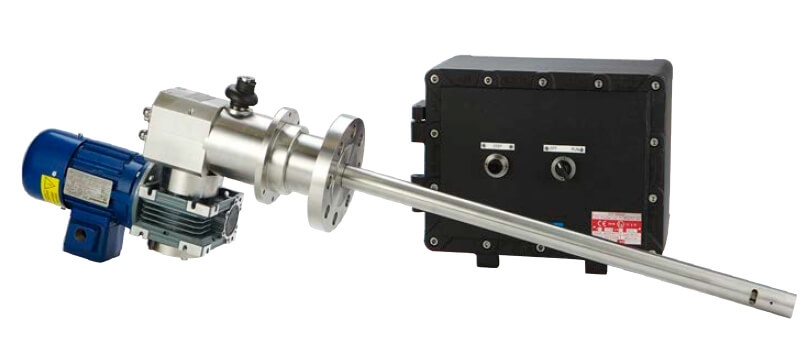Insertion samplers are generally used on relatively low pressure pipe lines (Class 300) where sufficient head full room is available for extraction and insertion. Alternatively, the sampler can be mounted off vertical.
The sampler is inserted either manually or mechanically into the main pipe line via an isolation chamber and full bore valve. The depth of penetration into the pipe line should be defined by profile testing so that the sampler sees a fully representative cross-section of the fluid stream.
Features
- High Repeatability of Grab Volume +/-0.5%.
- Construction of sampler internal non-return valve exit passage avoids separation of immiscible constituents, i.e. water in crude oil during the sampling cycle
- No selective water retention ports within sampler cell
- Stainless steel Construction
- Material selection to meet NACE MR 0715R requirements
- Precision built for precision sampling
- Manual, mechanical or hydrailic extraction and insertion mechanism
Purpose
The purpose of a Sampling System is to periodically extract a representative sample from a flowing fluid stream in order to determine its constituent properties. In the case of a two phase fluid stream, the Sampler and the associated collection system must take into account the relative proportions of the immiscible constituents, i.e. water in crude oil, and avoid the 'biasing' of the sample in favor of a particular constituent.
Where dissolved high vapor pressure fractions are also present and these are also subject to determination, the Sample and the associated Sample Collection System must ensure that these fractions are retained during the sampling and storage cycle.
Mode of operation
The downward action of the pneumatically operated piston, releases the capture tube via the 'lost motion’ spring to trap a defined volume of fluid between the non-return valve (N.R.V) assembly and the anvil. The continuing downwards motion of the piston then forces N.R.V. assembly into the trapped fluid thus forcing it to issue under pressure into the Sample Collection System.
The virtue of the lost motion system is that only one set of seals is used in the dynamic mode during the pumping cycle with the added advantage of avoiding water retention points within the sample cell.
A feature of the Maurer Sampler is that the trapped sample is pumped out via a 3mm bore tube and not around the annulus area of the N.R.V. thus avoiding the possibility of water separation within the Sampler itself after capture.
A noticeable feature of the Sampler is that the fluid to be sampled is sectioned upstream of the capture tube via an extended sharp edged pitot tube end flow straightening vane assembly. This system avoids the errors associated with water loss due to 'bluff body’ effects at the Sampler head itself.
